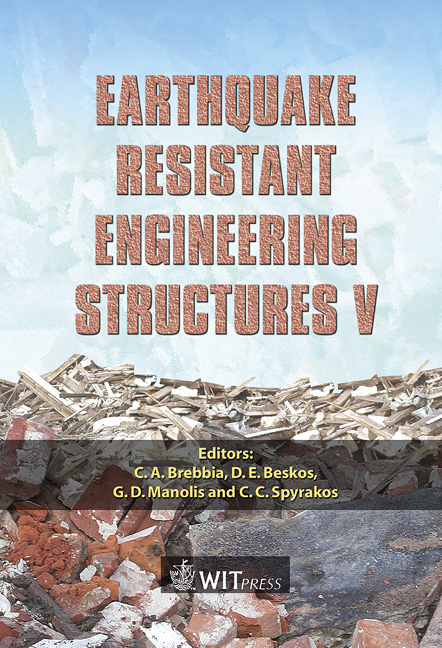Inelastic Seismic Response Comparison Of Two 15 And 25 Level Buildings Of Reinforced Concrete With And Without Shear Walls
Price
Free (open access)
Transaction
Volume
81
Pages
10
Published
2005
Size
573 kb
Paper DOI
10.2495/ERES050241
Copyright
WIT Press
Author(s)
J. A. Avila & E. Martinez
Abstract
The inelastic seismic behaviour of two reinforced concrete buildings of 15 and 25 levels is compared with and without shear-walls: A case-frames and B case-frames and shear walls, both directions. The resistance-seismic design and vertical loads is made according to the requirements of the Mexico City Code (RDF-93), satisfying the limit states of service (drifts ≤0.012) and resistance (Q = 3): compressible zone (soft soil), B group (offices), and the concrete walls density (wall area/ plant total area) in the superstructure (B case) is a little more less than three and two percent for the transversal and longitudinal directions, respectively, which is common in constructions after 1985 earthquake damages. Inelastic seismic responses are determined with dynamic analysis step by step with SCT-EW-85 record with and without over-resistance effects. Results show the importance of the participation of the shear walls in order to reduce of the magnitude of structural damages during severe seismic future events. 1 Introduction Considering the damages of the last important earthquake occurred in Chile and Mexico, it was noticed that those buildings with enough lateral stiffness, given generally by shear walls, were the best behaved. This proves that when designing, a special care must be taken to limit the lateral displacement in order to reduce the probable damages in intense earthquakes. During 1985 Mexico earthquake there were many structures between 7 and 17 levels that behaved
Keywords





